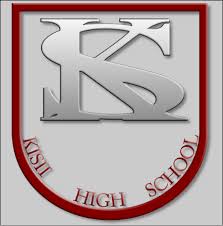CURRICULUM
KCSE is the second examination phase in the Kenyan 8-4-4 education system It is reputable because it gives students a broad understanding of everyday life. Its curricula encompasses humanities and sciences that are relevant to the social, economic and political spheres of life.
The curricula is in-depth in nature and prompts learners to be self-disciplined, organized and thorough. Further, because the system is grade-based it develops students to be self-motivated knowledgeable individuals. Also, the system is exam focused and is recognized the world over.
Many parents appreciate that their children benefit from the system’s rigorous training and that the broad curricula gives students a lot of options to decide what to specialize in once in college. The program takes four years . It ends with the final assessment: The KCSE exam done in form four which tests students theory and practical knowledge of subjects covered.
The School offers a wide range of subjects based on the 8-4-4 system of education, which includes the following subjects:
| CATEGORIES | SUBJECTS |
|---|---|
| Languages: | English, Kiswahili, French, German |
| Sciences: | Mathematics, Biology, Chemistry, Physics. |
| Humanities: | Geography, History & Government, Christian Religious Education, Social Education and Ethics |
| Technical Creative Arts: | Wood Technology, Metal Technology, Power Mechanics, Electrical Technology, Business Edication. |
Under the current system, students attend secondary school for four years before sitting for the school leaving exam at the end of the fourth year. The first class or year of secondary school is known as form 1 and the final year is form 4. At the end of the fourth year, from October to November students sit for the Kenya Certificate of Secondary Education examination. In 2008, the government introduced plans to offer free Secondary education to all Kenyans.
| KCSE GRADING SYSTEM | ||||||||||||
|---|---|---|---|---|---|---|---|---|---|---|---|---|
| Grade: | A | A- | B+ | B | B- | C+ | C | C- | D+ | D | D- | E |
| Points: | 12 | 11 | 10 | 9 | 8 | 7 | 6 | 5 | 4 | 3 | 2 | 1 |
The average grade is based on performance in the eight subjects. Where a candidate sits for more than eight subjects, the average grade is based on the best eight subjects. University matriculation is based on the best eight and performance in particular subjects relevant to degree courses. Example below:
| SUBJECT | GROUP | GRADE | POINTS |
|---|---|---|---|
| English | 1 | B | 10 |
| Kiswahili | 1 | A- | 11 |
| Mathematics | 1 | A | 12 |
| History and Government | 3 | B | 9 |
| Geography | 3 | A- | 11 |
| Physics | 2 | B+ | 10 |
| Chemistry | 2 | B- | 8 |
| Biology | 2 | A- | 11 |
The total number of points is 81. The average grade is 81 divided by 8, which equals 10.1 (approximately 10.0 points) which is Grade B+ according to the grading system. This student qualifies to join one of the Public Universities for his good score. Training institutions and faculties and departments determine their own minimum entry requirements. Students who manage a grade of C+ qualify to do a degree course at the University. Owing to competition, and fewer places at the University, those with B and in a few cases B-, and above are taken for degree courses at the Public Universities and benefit by paying government-subsidised fees. The rest join private universities or middle-level colleges. Interestingly, the number of students admitted to public universities through J.A.B depends on the total number of beds available in all the public universities. Nonetheless, those who miss out but attained the minimum university entry mark of C+ or C with a relevant diploma certificate are admitted through the parallel degree programmes (module II) if they can afford the full fees for the course. This has been the subject of much discussion with people questioning the rationale and morality of locking out qualified students from public institutions yet still admitting those who come from financially able families.
